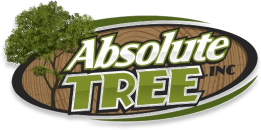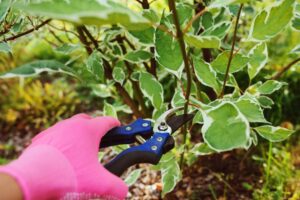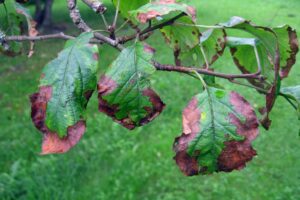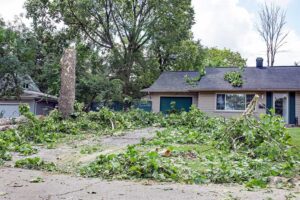VDOT’s recent winter weather briefings are a humbling reminder that cold weather is right around the corner. For Northern Virginia property managers, that means it’s time to think beyond snow removal and start planning tree pruning before winter storms arrive. In cities like Alexandria, Arlington, and Fairfax County, where dense commercial landscapes create unique challenges, knowing what drives tree pruning costs helps you budget wisely, prevent hazards, and avoid unexpected expenses.
Key Takeaways
- Location dramatically impacts costs, as historic districts like Alexandria Old Town require special permits and compliance measures that can significantly increase project expenses.
- Dense urban areas in Arlington’s Rosslyn corridor often require specialized rigging and manual climbing techniques, raising labor costs substantially.
- Commercial properties can reduce pruning costs through winter scheduling, when companies have greater availability and easier equipment access.
- Large mature oaks and maples, common in Fairfax office parks, require more time and specialized techniques than smaller ornamental species.
- Each jurisdiction, from Alexandria to McLean, has different permitting requirements that property managers must factor into project timelines and budgets.
- Working with ISA-Certified Arborists ensures accurate scoping and prevents unnecessary work that can inflate costs.
What Really Drives the Cost of Commercial Tree Pruning
Understanding what drives commercial tree pruning costs in Northern Virginia requires looking beyond simple tree size measurements. The region’s unique combination of urban density, mature tree canopies, and diverse commercial property types creates a complex pricing landscape that property managers must navigate carefully. Here are the biggest factors that influence pricing in our region:
- Tree Size and Canopy Complexity: Large oaks, maples, and tulip poplars with 60-foot canopies can take a full crew all day, while a row of smaller ornamentals may only take a few hours.
- Scope of Work: Routine maintenance pruning is straightforward and less expensive. Corrective pruning for neglected or storm-damaged trees – or crown cleaning in areas like McLean, where aesthetics are a priority – requires more time, skill, and expense.
- Equipment and Crew Access: Dense development in places like Alexandria often limits truck or crane access, requiring compact lifts, manual rigging, and larger crews. In open office parks, access is easier and more cost-efficient.
- Seasonal Timing: Emergency pruning costs more due to urgency and limited crew availability. Winter pruning is often the most cost-effective, with better access on frozen ground and improved visibility without leaves.
- Certification and Insurance Requirements: Commercial properties demand higher standards. ISA Certified Arborists, TRAQ-trained professionals, and comprehensive insurance add cost but provide liability protection and quality assurance that residential-focused companies may not offer.
“When assessing commercial pruning projects, we evaluate not just the trees themselves, but the entire site environment. A property in downtown Alexandria requires completely different planning and equipment than a suburban office park in Fairfax. These logistical factors can represent a sizeable chunk of the total project cost.” – Ashley Davis, Owner of Absolute Tree
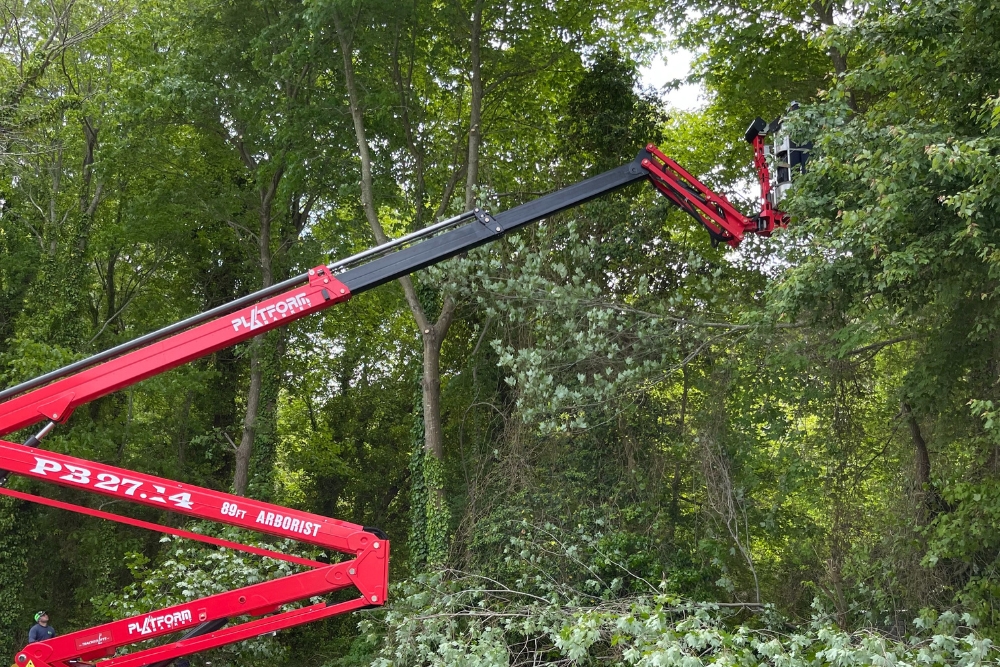
Specialized equipment like articulated boom lifts is often required for accessing mature trees in tight commercial spaces, significantly impacting project costs
Location-Specific Pricing Challenges Across Northern Virginia
Each commercial area within Northern Virginia presents distinct challenges and regulations that directly impact tree pruning costs. Understanding these location-specific factors helps property managers budget accurately and select appropriate contractors for their properties.
Alexandria
Commercial properties within Alexandria’s Old and Historic District face unique regulatory requirements that significantly impact pruning costs. Narrow cobblestone streets, historic architecture, and heritage tree protections often restrict equipment access. Crews may need to hand-carry debris or use specialized rigging, which adds labor hours and complexity.
Permits & Compliance
Properties in the Historic District must obtain a Certificate of Appropriateness for any tree work on specimens larger than 15 inches DBH. The review process adds documentation requirements and potential delays, while also restricting the types of pruning permitted.
Arlington
The commercial high-rises and mature canopy trees throughout Arlington’s urban corridors create some of the region’s most complex pruning scenarios. Power line proximity, building clearance requirements, and pedestrian safety considerations demand specialized rigging systems and often crane assistance for larger specimens.
Permits & Compliance
The Arlington County Tree Preservation Ordinance aims to maintain the urban canopy, meaning that any pruning work must consider long-term canopy goals. Projects disturbing more than 2,500 square feet may require a Landscape Plan prepared by an engineer and a Certified Arborist. This regulatory framework often necessitates more detailed planning and documentation, adding to project complexity and cost.
Fairfax
Corporate campuses and office parks throughout Fairfax County typically feature extensive mature tree populations that require coordinated maintenance approaches. The scale of these properties allows for more efficient equipment deployment, but the coordination requirements with facility management, tenant operations, and parking logistics create their own cost factors.
Large mature specimens common in these environments – particularly the native oaks and maples that can reach 80+ feet in height – require experienced crews and specialized equipment. The planning required to minimize business disruption and coordinate around tenant schedules often extends project timelines and requires premium scheduling.
Permits & Compliance
Fairfax County’s tree preservation policies focus primarily on development-related activities, but commercial properties must still consider Chesapeake Bay Preservation Ordinance requirements for any work within Resource Protection Areas.
Properties within 100 feet of streams or wetlands face additional permitting requirements that can extend project timelines by 4-6 weeks and add significant documentation costs. However, these requirements help protect the region’s water quality and often qualify properties for environmental stewardship recognition.
McLean Commercial Districts: Premium Aesthetic Standards
Commercial properties in McLean often operate under strict community standards and HOA oversight that demands higher-end aesthetic pruning techniques. The affluent area’s emphasis on maintaining property values means that pruning work must achieve not just safety and health objectives, but also premium visual results.
These aesthetic requirements typically involve more detailed crown cleaning, precise shaping work, and often more frequent maintenance cycles. The premium pricing reflects both the additional time required and the higher skill levels needed to achieve these aesthetic standards.
Permits & Compliance
Community standards and HOA oversight often create stricter expectations for appearance and maintenance scheduling, which can add indirect costs to pruning projects.

Commercial properties often require premium aesthetic standards and precise pruning work to maintain professional appearances and property values.
Springfield & Burke
Mixed-use properties throughout Springfield and Burke present unique access challenges that impact pruning costs. Tight parking areas, building proximity, and shared infrastructure require contractors to use smaller equipment and often hand-carry debris over longer distances.
The residential proximity common in these mixed-use environments also requires more careful scheduling and noise consideration, often limiting work to specific hours and requiring additional coordination with adjacent property owners.
Municipal Contractor Licensing Across Northern Virginia
All commercial tree work in Northern Virginia requires contractors to maintain appropriate municipal licenses and certifications. Alexandria requires specific Tree Service Provider licensing, while Arlington and Fairfax have their own certification systems.
These licensing requirements ensure that contractors meet minimum insurance, safety, and competency standards, but they also limit the contractor pool and can impact pricing. Property managers should verify that any contractor holds the appropriate local licenses to avoid project delays and potential liability issues.
PRO TIP: Working with properly licensed and certified contractors may cost more than unlicensed alternatives, but it provides essential liability protection and ensures compliance with local regulations.
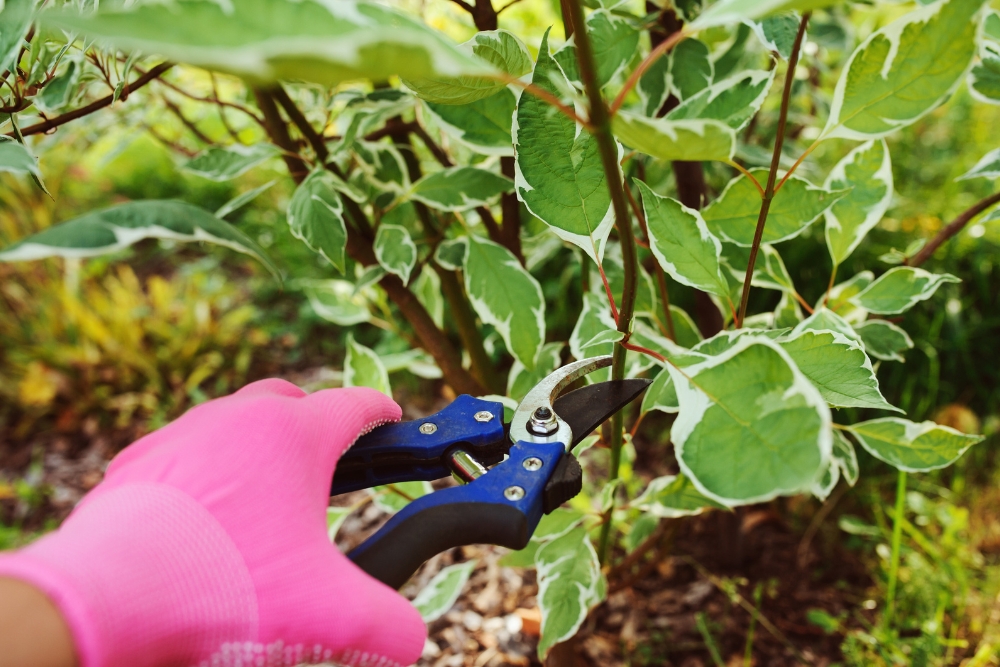
Detailed pruning work requiring specialized techniques and skilled arborists contributes to higher costs for commercial tree maintenance.
Frequently Asked Questions
What should I expect during a professional commercial tree assessment?
A thorough commercial assessment should include a complete property survey, individual tree health evaluations, risk assessments for structures and utilities, regulatory compliance review, and a detailed written report with prioritized recommendations. ISA Certified Arborists will document tree species, sizes, conditions, and specific maintenance needs. The assessment should also include cost estimates for recommended work and suggested scheduling to minimize business disruption. Quality assessments usually take a few hours, depending on property size, and include digital documentation and photographic evidence.
How can I tell if a commercial tree pruning estimate is accurate and fair?
Accurate estimates should include detailed descriptions of work to be performed, specific tree identification and location information, clear timeline and scheduling parameters, equipment and crew requirements, debris removal and cleanup procedures, and regulatory compliance measures. Red flags include unusually low bids that may indicate corner-cutting, door-to-door solicitation, requests for full payment upfront, lack of proper licensing and insurance, and reluctance to provide written estimates. Always request at least three estimates from properly licensed contractors and verify insurance coverage and local business licenses.
What regulatory permits might my commercial property need for tree pruning?
Permit requirements vary by location and project scope. Alexandria’s historic districts require Board of Architectural Review approval for trees over 15 inches in diameter. Arlington County requires landscape plans for projects affecting over 2,500 square feet. Fairfax County mandates permits for work in Resource Protection Areas near streams. Properties with heritage or specimen trees may need additional approvals. Your contractor should be familiar with local requirements and assist with permit applications. Budget 2-6 weeks for permit approval and $100-1,000 in permit fees depending on project complexity.
How do HOA or community association requirements affect commercial pruning costs?
Community associations, particularly in areas like McLean, often maintain strict aesthetic standards that require premium pruning techniques and more frequent maintenance. These requirements can increase costs by 25-35% due to detailed crown cleaning, precise shaping work, and coordination with architectural review committees. Some associations require pre-approval for any tree work and may mandate specific contractors or techniques. Factor in additional time for approvals and potentially higher aesthetic standards when budgeting for properties in upscale commercial areas with active community oversight.
What’s the difference between emergency pruning rates and planned maintenance pricing?
Emergency pruning typically costs significantly more than planned maintenance due to immediate response requirements, premium labor rates, and safety complexities. Storm damage work often requires specialized equipment and after-hours scheduling. Planned maintenance allows contractors to schedule efficiently, use optimal equipment, and work during favorable conditions. Winter planning is especially cost-effective, as contractors offer seasonal discounts and have greater availability. Property managers can reduce emergency costs by scheduling annual assessments and addressing potential hazards proactively.
How should I budget for ongoing commercial tree maintenance versus one-time projects?
Most commercial properties benefit from annual maintenance contracts that provide cost predictability and priority scheduling. Budget a reasonable percentage of your total landscape maintenance budget for tree care, with higher allocations for properties with extensive mature canopies. Establish regular maintenance cycles for most trees, with annual inspections to identify emerging issues. One-time corrective work typically costs significantly more than preventive maintenance. Consider seasonal contracts that bundle multiple services for cost savings and simplified budgeting.
What insurance and liability considerations should I know about for commercial tree work?
Commercial tree work requires contractors to carry comprehensive general liability insurance (with a minimum coverage of $1 million), workers’ compensation coverage, and often professional liability insurance. Verify insurance coverage includes specific tree work activities and equipment operation. Property managers should require certificates of insurance that name the property as an additional insured. Unlicensed or uninsured contractors can create significant liability exposure for property owners. Many commercial properties also require contractors to meet specific safety certification standards and maintain OSHA compliance for all work activities.
For Professional Commercial Tree Care You Can Trust, Call Absolute
Understanding commercial tree pruning costs in Northern Virginia requires more than just comparing price quotes. The unique challenges of our region’s urban environment, regulatory requirements, and diverse commercial property types demand experienced professionals who understand both arboriculture and local business needs.
At Absolute Tree Service, our ISA Certified Arborists bring nearly two decades of commercial experience to Northern Virginia properties. We understand the permitting requirements in Alexandria’s historic districts, the access challenges in Arlington’s urban corridors, and the coordination needs of Fairfax County’s corporate campuses. Our comprehensive approach ensures you receive accurate estimates, professional execution, and long-term value for your tree care investment.
Ready to develop a cost-effective tree care plan for your commercial property? Call us at 703-969-6207 or request an estimate online. Let our expertise help you budget effectively and maintain the health and beauty of your property’s trees.
For the Absolute Best Tree Service in Northern Virginia, call Absolute Tree Today!
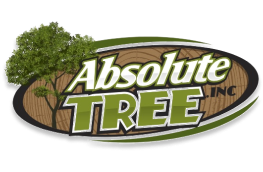
Author Profile: Ashley Davis
Over the last 19 years, Absolute Tree has grown a reputation as one of the premier tree service companies in the Northern Virginia areas. And there’s a good reason for this—we love trees and our passion for them shows. When you call on Absolute Tree for tree service, you aren’t just getting “some guys who cut down trees.” You’re hiring highly skilled arborists who understand the growth of trees and consider tree care an art form.
Stay Up-to-date!
Swing in each month for new articles, pest alerts, local resources, tree care tips, tree health updates, and landscape maintenance ideas
